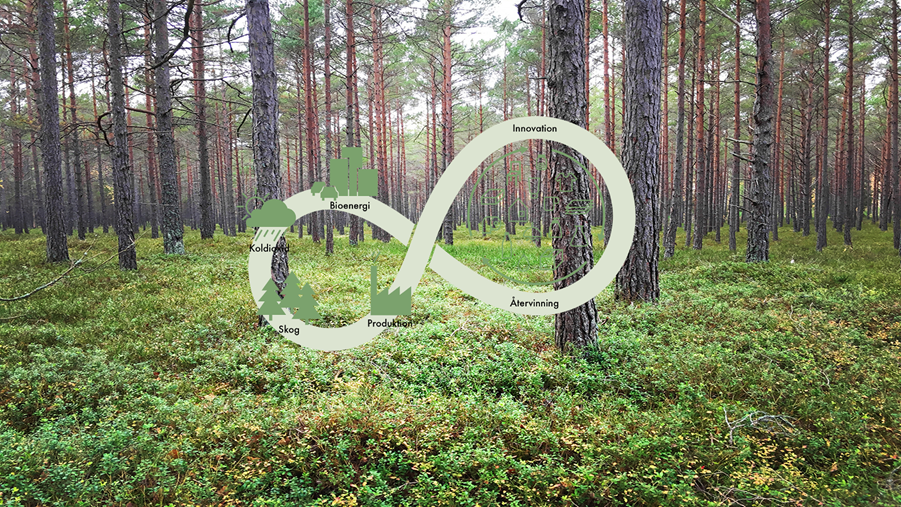
Are forest fires becoming more frequent?
Is there a change in amount of forest fires and fire-pattern over time? What has caused forest fires, today and in the past?

How is sustainable forest management defined? And how can it become an important driver in climate efforts? What is the situation in Sweden today? Researchers Tomas Lundmark and Rolf Björheden answer based on their research findings.
The definition of sustainable forest management varies slightly depending on who you ask, but the general spirit is the same. This is the wording of the Food and Agriculture Organization (FAO) of the United Nations: "The stewardship and use of forests and forest lands in a way, and at a rate, that maintains their biodiversity, productivity, regeneration capacity, vitality and their potential to fulfill, now and in the future, relevant ecological, economic and social functions, at local, national, and global levels, and that does not cause damage to other ecosystems."
sustainable forest management is not a static phenomenon. Rather, it is a process in which both the terms and the methods are under continual development. There are no absolutes, but many variables. Timber production does not have to be the opposite of conservation; you can have both.
"It is becoming widely accepted that wisely managed forests represent the most sustainable option, when taking into account the big picture comprising economic, social and environmental goals. The aim is to fulfil all three goals simultaneously. If the forestry is not environmentally or economically sustainable, or if it leads to unacceptable social consequences, the goals have not been achieved," says Rolf Björheden, Professor of Forest Operations at Skogforsk, the Forestry Research Institute of Sweden.
In Sweden, forestry is based on laws regarding reforestation, management and nature conservation, combined with a profitable forest industry which makes it possible to make a livelihood from a forest property. Since the 1950s, the majority of Sweden's forests are managed by stands, the trees in one stand being the same age. An aerial view reveals a mosaic of stands of different ages.
"We have seen a steady increase in forest growth, timber volume and harvesting. Far more is harvested today than in 1960, but there are still more trees in the forests today. Ambitious new environmental goals have been introduced, and efforts have begun producing results. This suggests that modern forest management is both economically viable and environmentally sustainable," says Tomas Lundmark, Professor of Forest Management at the Swedish University of Agricultural Sciences in Umeå, northern Sweden.
According to the Swedish Forestry Act, harvested stands must always be regenerated with new forest – normally at a rate of two to three new plants for each harvested tree. Sweden's neighbour Finland has similarly high demands. Replanting of trees is the very foundation of sustainable forestry. Other key aspects are planting the right trees in the right place; species that are suited to the land and climate zone in question. It is important to take care of the valuable resource that is the forest, by increasing growth and investing in growing forests.
"We are in a good position, but there is still huge potential for improvement. Several studies show that the growth and vitality of the forests can be enhanced. Establishment of new forests after harvesting and nurturing of young forests can both be more effective. Traditional tree breeding produce plants with higher growth, that are more robust and have a far better ability to withstand a varying climate, so they should primarily be used," Björheden explains.
There has long been a discussion in Sweden between the forest sector and the environmental movement, regarding which forest areas should be used and how much should be preserved. Official figures from Statistics Sweden show that around 27% of Sweden's total woodland is exempt from management; this figure includes formally protected woodland such as nature reserves, voluntary set-aside areas on the landowner's initiative and expense and existing areas of nature consideration and low-productive woodland.
Many environmentalists advocate excluding more forest from timber production. Lundmark says that there is a clear conflict of goals between excluding more forest from active harvesting for the sake of the environment, and using the forest more actively for the sake of the climate and bioeconomy:
"The forests will never be enough for everything, but they can be used for a lot more than today if we develop our management of them, whether the ultimate aim is nature conservation or timber production. For this to happen, what we need above all is a trusting dialogue between politicians and forest owners. The forest owners are the ones who decide how their forest will be used, and they are the ones who know how it can be used to achieve different goals."
Lundmark also claims that nature conservation could be more effective in the areas exempted from timber production, and on other woodland growth could increase significantly if forest owners were given the right conditions.
"Politics has a great responsibility, and Sweden needs a clear growth goal for the forest, to complement the environmental goals," Professor Lundmark concludes.
Storgatan 19
Stockholm
Box 55525, 102 04 Stockholm, Sweden
+46 (0)8-762 72 60
We use cookies to improve your browsing experience (Swedish text)
Privacy policy (Swedish text)